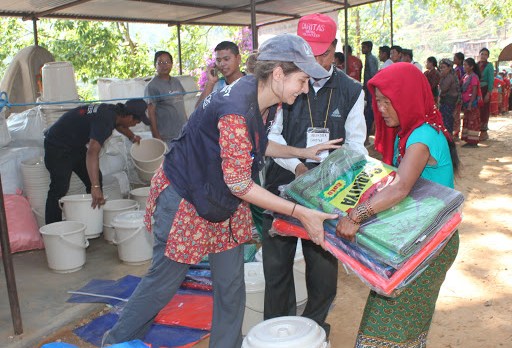KATHMANDU, Nepal—“Do you want to die?”
With those words, a senior Catholic relief coordinator politely taunted me when I raised the prospects of travelling to Sindhupalchowk, ground zero of the devastating earthquake in Nepal.
Sindhupalchowk, the worst affected district, where more than 3,000 bodies had been recovered after the April 25 quake and where hundreds are missing, was jolted again when a second strong quake rocked the region on May 12. The fresh quake, measuring 7.3 on the Richter Scale, has made the mountain road to the Sindhupalchowk and Dolakha districts extremely perilous, the relief coordinator noted.
“The people have lost faith in the experts,” Bishop Paul Simick, who heads the minuscule Catholic Church in Nepal told Aleteia Friday. Taking even seismologists by surprise, the May 12 earthquake rattled a nation gradually coming to terms with the death and devastation from the April 25 event. More than 8,000 people had already lost their lives, and over 550,000 homes and thousands of commercial and other structures were destroyed or damaged.
Besides testing the confidence of the die-hard Nepalese, who are used to a harsh life in Himalayan mountain villages, the second quake also contradicted seismologists’ presumption that the intensity of after-shocks would steadily decline.
“What is the guarantee that there will be no more quakes?” asked Shiva Gautham, a taxi driver whose house crumbled in the April 25 quake.
Fear is everpresent as minor tremors continue to startle people several times a day. As a result, several shops and businesses in Kathmandu have shuttered again, and many people are sleeping outside. A couple dozen families, including non-Christians, flock to Assumption Church in Lalitpur to sleep peacefully in tents set up in its open air compound.
Next door is the headquarters of Caritas Nepal, where more than two dozen staff have been working outside their building since May 13 after engineers ruled that the cracks developed in the fresh quake had made part of the building unsafe. They established an open air office under plastic sheets after the earthquake alarm in the three-story building, which is also the coordinating center for over a dozen international Catholic charities, sounded twice.
This reporter had a firsthand taste of the panic on May 12. I felt a trembling under my feet while climbing the mountain at Namjung village, a two-hour drive from Gorkha. About 600 people gathered under mango trees to collect relief material from Catholic Relief Service (CRS).
Loud screams and shouts rent the air, and the crowd looked anxiously at a remote village where a huge pall of dust was in the air. It was a massive landslide a couple of miles away from the mountain.
As I hit the road back to Kathmandu that evening, the Hindu hotel manager at Gorkha cautioned me, “Tell the driver to drive slowly.” We were hardly down the steep slope from the hotel when a boulder rolled down in front of us.
“Many people who have been going for relief work have now stopped. They are worried about their own safety and their families,” admitted Anju Mishra on May 14 when she accompanied Maryknoll Father Joseph L Thaler to the warehouse at Assumption Church to pick up tents for remote areas.
Bishop Simick is worried about the cascading impact of the fear on the hapless quake victims in remote areas. Monsoon season is around the corner, and landslides will be worse this year.
“How will we get relief material to those people in remote mountain areas?” asked the bishop. Even regular church drivers, he admitted, are already showing reluctance to drive to remote areas.
“It is going to be a tough challenge,” admitted John Service who heads the CRS logistics team in Gorkha.
When the monsoon season begins in early June, Service cautioned, relief teams will find it difficult to move around with kits of heavy shelter material. Increased landslides, he added, are bound to block roads and render many parts of the mountainous nation inaccessible.
“We have to cover as much area as we can before the heavy rains come,” he said.
CRS has distributed relief kits to as many as 5,200 families from its base at Gorkha, and aims to cover 15,000 more before the monsoons begin.
Anto Akkara is based in New Delhi, India.

